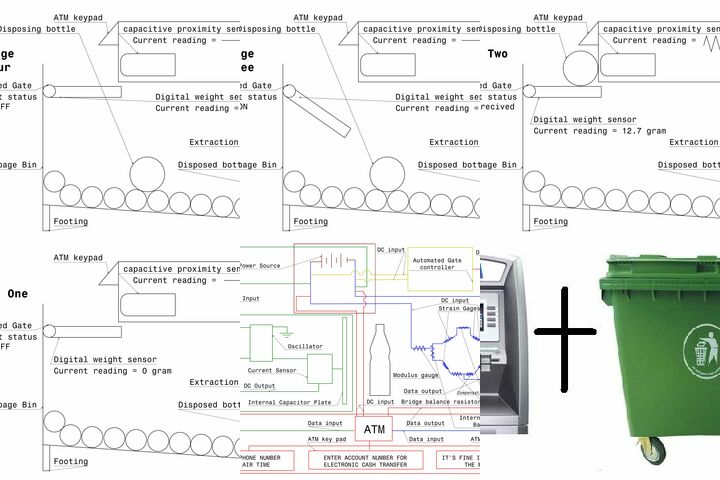ATM Bin- dispose and paid
The Problem
There are many types of wastes in the world. The most difficult one to manage is plastic. This is because plastics can easily harm living things because chlorinated plastic can release harmful chemicals into the surrounding soil which can then seep into groundwater or other surrounding water sources and also the ecosystem, the fact they do not decompose easily and many other reasons. In the city, the most plastic wastes include bottled water, fruit or juice boxes, home use chemical packaging and so on. These plastics are Polyethylene terephthalate (PET). Polyethylene terephthalate (PET) the most widely used plastics in the world. Companies pay garbage collators especially plastic waste collectors lots of money for recycling and this is not an easy task. This is because collecting entirely depend on consumer waste management habit. This project makes every consumer be a garbage collector getting benefit by doing so. The device is a garbage bin that pays a small amount of cash for putting a plastic material containing Polyethylene terephthalate (PET). The device has capacitive proximity sensor which will help it to know when a plastic containing Polyethylene terephthalate (PET) enters into the bin. The device also has a weight sensor that will automatically compare it into what brand or product of the plastic you have inserted in.
Our Proposal
Let say someone drops a bottle in the bin and the bin automatically senses that it is plastic using the capacitive proximity sensor, measure the weight and pay the customer electronically. This will encourage consumers to have a positive habit of plastic waste management. The device can be installed in malls, private and government buildings, hospitals and so on. In our country peoples get paid for collecting plastic but I always notice it is very difficult to manage because it is entirely dependent on the habit of the society and comparing to the effort/ energy they spent the payment is too low. Therefore, if we use this mechanism we can easily collect, benefit the consumer and bring positive change to our world. The main point of this project is shaping the social mind into positive management habit of plastic waste management by rewarding them with small rewards. This will transform us into the next generation of waste management of a city if we can see the big picture. To avoid vandalism the device can pay the customer electronically, like air time of cellphone and a small price to customers account. The system will only pay for specific plastics that are high in number in a society like water or beverage bottles (PET). Since the device will be placed at malls, commercial towers, apartments and so on the device will be safe from rain, snow and other environmentally hazard for electronics. The system can be run by sponsors of banks linked with the governmental bodies.
We Assume that...
I am assuming if the reward is paid electronically, banks will agree to sponsor in return for advertising and other benefits.
Constraints to Overcome
Today's recycling is government-operated, taxpayer-funded driven by waste management bodies and the plastics industries. Plastic designers, manufacturers and recyclers work in isolation from each other. Solution providers, NGOs and governments deliver only National solutions that do not address global needs. The plastics industry acknowledge the problem of plastic pollution and promote reuse and recycling while fighting local regulation of plastic products. This plastic world is full of contradictive ideology and the reason is basically based on expense. These contradictions impact the societies mind to be careless on managing the waste plastics. This project will brainwash the society into positive plastic waste management resulting in assistance of private and government funded recyclers. This will impact the world big time. This is a serious business plan that has money flow and adds value to society and corporate companies like banks and such.
Current Work
As seen in the figure, the basic mechanism is first customers put plastic bottles inside the ATM garbage bin, then automatically the capacitive proximity sensor finds out if it is a plastic bottle or not. Capacitive proximity sensors are non-contact devices that can detect the presence or absence of virtually any object regardless of material. They utilize the electrical property of capacitance and the change of capacitance based on a change in the electrical field around the active face of the sensor. Simultaneously the weight sensor measures the bottle wight and compares to the data that is fed to it. When both devices imply positive output the ATM bin will show three options pay air time, bank account and no payment so that the customer chooses one. When the customer chooses one, the automated gate will open and the bottle will be dropped in the garbage bin. These processes take place in a matter of seconds.
Current Needs
I have managed to come up with a good plan and design and the next step is building the prototype. I need funding to build the prototype.
